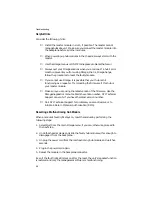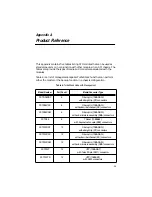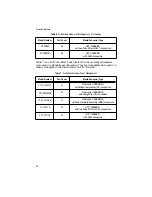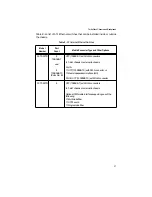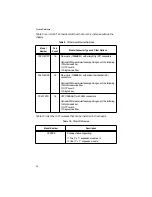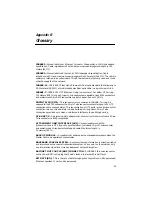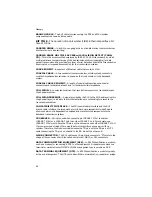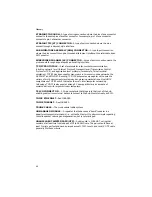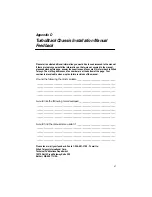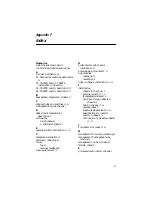
TurboStack Chassis and Backplanes
43
POLARITY CORRECTION—Many 10BASE-T UTP ports have a polarity correction
function. If the UTP wiring has RD- and RD+ inadvertently crossed, the polarity
correction function will sample the signal and electrically swap the wires. If the TD- and
TD+ wires are crossed, the correction would occur at the MAU on the other end of the
UTP link. This occurs within a single pair and should not be confused with the cross-
over cable.
PROPAGATION DELAY—The time it takes a signal to travel from the input of a
system component to the output. Usually measured in nanoseconds. IEEE 802.3 has
specific propagation delay maximums for computing propagation budgets when
designing a LAN. Cable length plays a major role in propagation delay. [i.e., a 50 meters
(164 ft.) AUI cable has a maximum allowable propagation delay of 257 ns.] The
propagation delay of cable is dependent on length and velocity factor of the cable type.
There are also propagation delays associated with electronics attached to the system.
PUNCH-DOWN BLOCK—The punch-down block is the wiring panel where the house
wiring from the building’s offices terminates. This is where many 10BASE-T hubs would
be located. Wiring installers use a special punch-down tool to insert the UTP wire for
data and voice applications.
REPEATER—A device used to extend the length, topology, or interconnectivity of the
physical medium beyond that imposed by a single segment, up to the maximum
allowable end-to-end trunk transmission line length. Repeaters perform the basic
actions of restoring signal amplitude, waveform and timing applied to normal data and
collision signals.
RJ45—This connector is a 10BASE-T standard for connecting UTP cabling. They are
inexpensive and easy to install onto UTP cable.
RJ21—See Telco Connector.
SIGNAL QUALITY ERROR (SQE)—Also referred to as Collision or Collision
Presence. This occurs when two devices attempt to transmit at the same time which is
an illegal condition.
SIMPLE NETWORK MANAGEMENT PROTOCOL (SNMP)— SNMP is a TCP/IP
protocol that generally uses the User Datagram Protocol (UDP) to exchange messages
between a management information base and a management client residing on a
network. Since SNMP does not rely on the underlying communication protocols, it can
be made available over other protocols, such as XNS or DECnet.
SLAVE— A repeater that behaves as a “dumb” module managed by a Master in a
department concentrator chassis. Slaves operating standalone perform only simple
regeneration and retiming tasks associated with repeating and are not manageable.
SQE TEST—Commonly referred to as Heartbeat, is a special 802.3 signal sent by the
MAU to the DTE to test the collision detection function. Some DTE want SQE and
others do not. Repeaters do not want SQE Test.
STANDALONE—Repeater operating as a hub on its own; i.e., not a module among
other modules in a department concentrator chassis.

